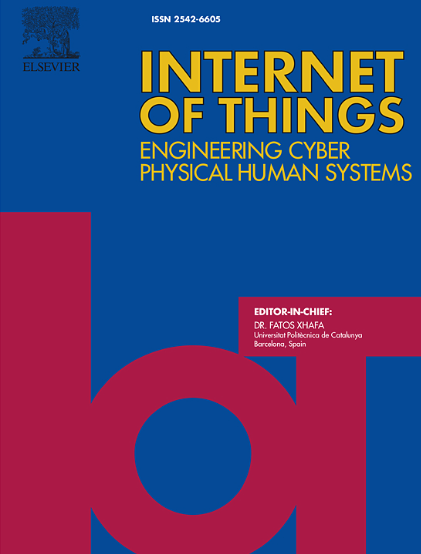通过减少建筑工地安全障碍来推进物联网采用的成功因素的整体评估
IF 6
3区 计算机科学
Q1 COMPUTER SCIENCE, INFORMATION SYSTEMS
引用次数: 0
摘要
建筑行业的特点是事故率居高不下,危险无处不在,因此迫切需要创新的安全干预措施。一个很有前景的解决方案是物联网(IoT)的集成,它提供了实时数据分析、早期危险检测和严格执行安全协议等功能。然而,尽管物联网技术具有巨大的潜力,但由于高昂的财务成本、技术集成挑战和变革阻力等重大障碍,物联网技术在建筑领域的广泛实施仍然有限。虽然以前的研究侧重于识别障碍,但它们忽略了有效采用物联网所需的关键成功因素(csf)和最佳实践。这一差距阻碍了广泛实施,使建筑工地容易发生可预防的事故。本研究通过确定简化物联网采用和减少障碍的csf来解决这一差距,为利益相关者提供了统一的框架。本研究采用四阶段研究方法:通过系统的文献综述识别企业社会服务质量与障碍;通过问卷调查收集行业和学术专家的数据;通过偏最小二乘-结构方程模型(PLS-SEM)分析企业社会服务质量与障碍之间的关系。结果显示了适度的相关性(R²= 0.137),表明诸如利益相关者协作、具有成本效益的实施策略和劳动力培训等CSFs显著减轻了采用障碍。例如,将物联网与现有安全协议集成并提供有针对性的培训计划可以提高采用率。这些发现有助于政府和建筑组织制定可操作的战略,例如激励物联网投资、促进公私伙伴关系和标准化实施指南。通过解决障碍和利用CSFs,本研究为提高物联网的采用提供了一条途径,最终提高建筑工地的安全性并降低事故率。该研究的实际见解和最佳实践为建筑公司、政策制定者和技术开发商提供了宝贵的指导,为更安全、更高效的建筑环境铺平了道路。本文章由计算机程序翻译,如有差异,请以英文原文为准。
A holistic evaluation of success factors for advancing IoT adoption through mitigating barriers in construction site safety
The construction industry is characterized by persistently high accident rates and pervasive hazards, highlighting a critical need for innovative safety interventions. One promising solution is the integration of the Internet of Things (IoT), which offers capabilities such as real-time data analysis, early hazard detection, and rigorous enforcement of safety protocols. However, despite its considerable potential, the widespread implementation of IoT technologies in construction remains limited due to significant barriers, including high financial costs, technical integration challenges, and resistance to change. While previous studies have focused on identifying barriers, they have overlooked critical success factors (CSFs) and best practices necessary for effective IoT adoption. This gap hinders widespread implementation, leaving construction sites vulnerable to preventable accidents. This study addresses this gap by identifying CSFs that simplify IoT adoption and reduce barriers, offering a unified framework for stakeholders. A four-phase methodology was employed: a systematic literature review to identify CSFs and barriers, a questionnaire survey to collect data from industry and academic professionals, and partial least squares-structural equation modeling (PLS-SEM) to analyze the relationships between CSFs and barriers. The results reveal a moderate correlation (R² = 0.137), demonstrating that CSFs such as stakeholder collaboration, cost-effective implementation strategies, and workforce training significantly mitigate adoption barriers. For instance, integrating IoT with existing safety protocols and providing targeted training programs can enhance adoption rates. These findings enable governments and construction organizations to develop actionable strategies, such as incentivizing IoT investments, fostering public-private partnerships, and standardizing implementation guidelines. By addressing barriers and leveraging CSFs, this research provides a pathway for improved IoT adoption, ultimately enhancing construction site safety and reducing accident rates. The study's practical insights and best practices offer valuable guidance for construction companies, policymakers, and technology developers, paving the way for safer and more efficient construction environments.
求助全文
通过发布文献求助,成功后即可免费获取论文全文。
去求助
来源期刊

Internet of Things
Multiple-
CiteScore
3.60
自引率
5.10%
发文量
115
审稿时长
37 days
期刊介绍:
Internet of Things; Engineering Cyber Physical Human Systems is a comprehensive journal encouraging cross collaboration between researchers, engineers and practitioners in the field of IoT & Cyber Physical Human Systems. The journal offers a unique platform to exchange scientific information on the entire breadth of technology, science, and societal applications of the IoT.
The journal will place a high priority on timely publication, and provide a home for high quality.
Furthermore, IOT is interested in publishing topical Special Issues on any aspect of IOT.
 求助内容:
求助内容: 应助结果提醒方式:
应助结果提醒方式:


